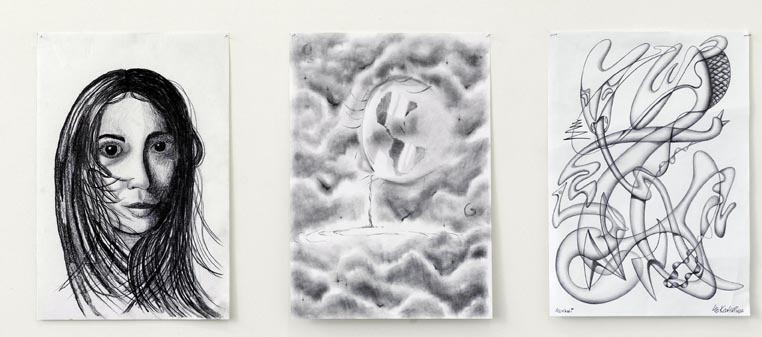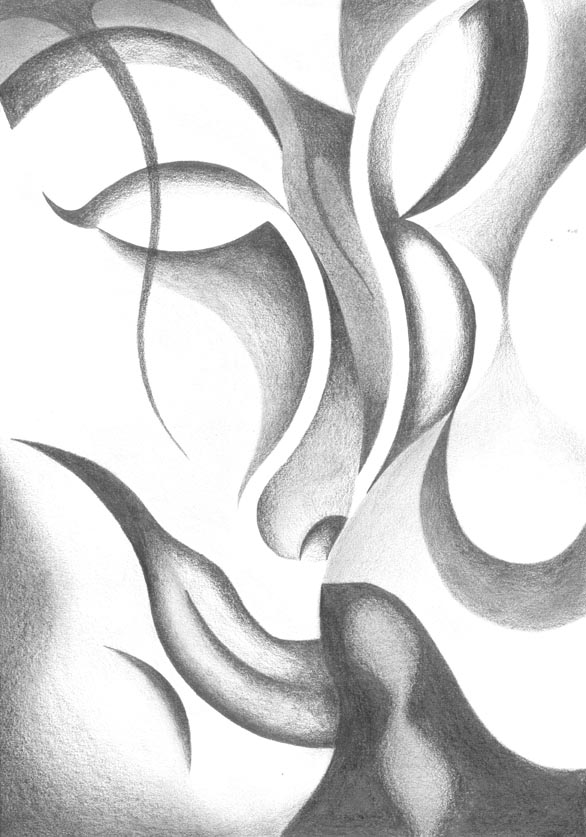 The variety of styles and subject matter among the 50 artworks hanging in Wellington’s Envy6011 gallery is what Gunter Muller most values about the exhibition showcasing the talents of 28 prisoners studying through The Learning Connexion.
The variety of styles and subject matter among the 50 artworks hanging in Wellington’s Envy6011 gallery is what Gunter Muller most values about the exhibition showcasing the talents of 28 prisoners studying through The Learning Connexion.
Gunter, a practising artist and one of seven mentors working in The Learning Connexion’s Restricted Programmes, says the pencil and paper works range from traditional portraiture to landscapes, surrealism and abstract work.
 One student has two intricate works in the exhibition, inspired by Cubism. “He’s a talented and technically proficient artist who did mostly portraits and replicas before he joined The Learning Connexion,” Gunter explains.
One student has two intricate works in the exhibition, inspired by Cubism. “He’s a talented and technically proficient artist who did mostly portraits and replicas before he joined The Learning Connexion,” Gunter explains.
“Through our programme, we introduced him to art movements he knew nothing about. He was very interested in Cubism and keen to explore it.
“A lot of the students I work with are technically amazing at drawing and painting but sometimes, their knowledge of where they can take their skills is limited.
“One of the challenges they face is their limited access to research, compared to students in the mainstream. Our role as mentors is to help them meet the course requirements and overcome the restrictions of prison life.”
For this exhibition, the artists were able to use only a black lead pencil and A4 paper. “Some students don’t have access to paints and so we decided to limit the brief to pencil and A4 paper. This created an even playing field so that all of our students could submit work, wherever they were.”
It was also a way to challenge students, he says.
Gunter has been working at The Learning Connexion for nearly three years. Based in Taita in the Hutt Valley, the arts and creativity tertiary institution set up a prison programme in 2005 as a pilot with five women in Arohata Women’s Prison.
Studying towards an art and creativity certificate or diploma
Now, its Restricted Programmes have approximately 140 students across the prisons – all studying towards an art and creativity certificate or diploma. Some students also continue their studies after they are released from prison.
Each mentor works with between 20 to 25 students.
 Preparing work and presenting it in exhibitions is an important part of their study requirements, particularly at Level 5, Gunter says.
Preparing work and presenting it in exhibitions is an important part of their study requirements, particularly at Level 5, Gunter says.
“At each level of qualifications, there are certain presentation conditions the students need to meet: things like meeting the brief, preparing for the exhibition, dealing with the selection process and presenting to a high standard,” he says.
“The Learning Connexion has a dedicated gallery space to showcase the work of our prisoner students but this opportunity at Envy6011 is important. There are few opportunities for these students to have their work displayed in community galleries and we hope to be able to do more of these shows.”
Keen to promote The Learning Connexion
Billy Bartley-Nees, director of Envy6011, says he and Gunter had talked about the exhibition over the past year. He was keen to promote The Learning Connexion and what it does.
“I’m drawn to art on the fringe – art that’s fresh and presents new ideas,” Billy says. “The different perspectives offered by untrained and professional artists interest me.”
 Gunter says that when prisoners first enrol in a Restricted Programmes course, they’re often simply looking for something to do. Some have limited experience of making art.
Gunter says that when prisoners first enrol in a Restricted Programmes course, they’re often simply looking for something to do. Some have limited experience of making art.
“When they find out they’re enjoying it they want to keep going,” he says. “There are so many benefits to our courses. The students gain a strong sense of purpose and want to keep creating. They’re excited about the possibilities and what they can achieve. And they feel pride in seeing themselves learn and grow.”
The exhibition runs at Envy6011 in Garrett St, Wellington until 17 December. The gallery is open Fridays (11am to 5pm) and Saturdays (11am to 4pm).


